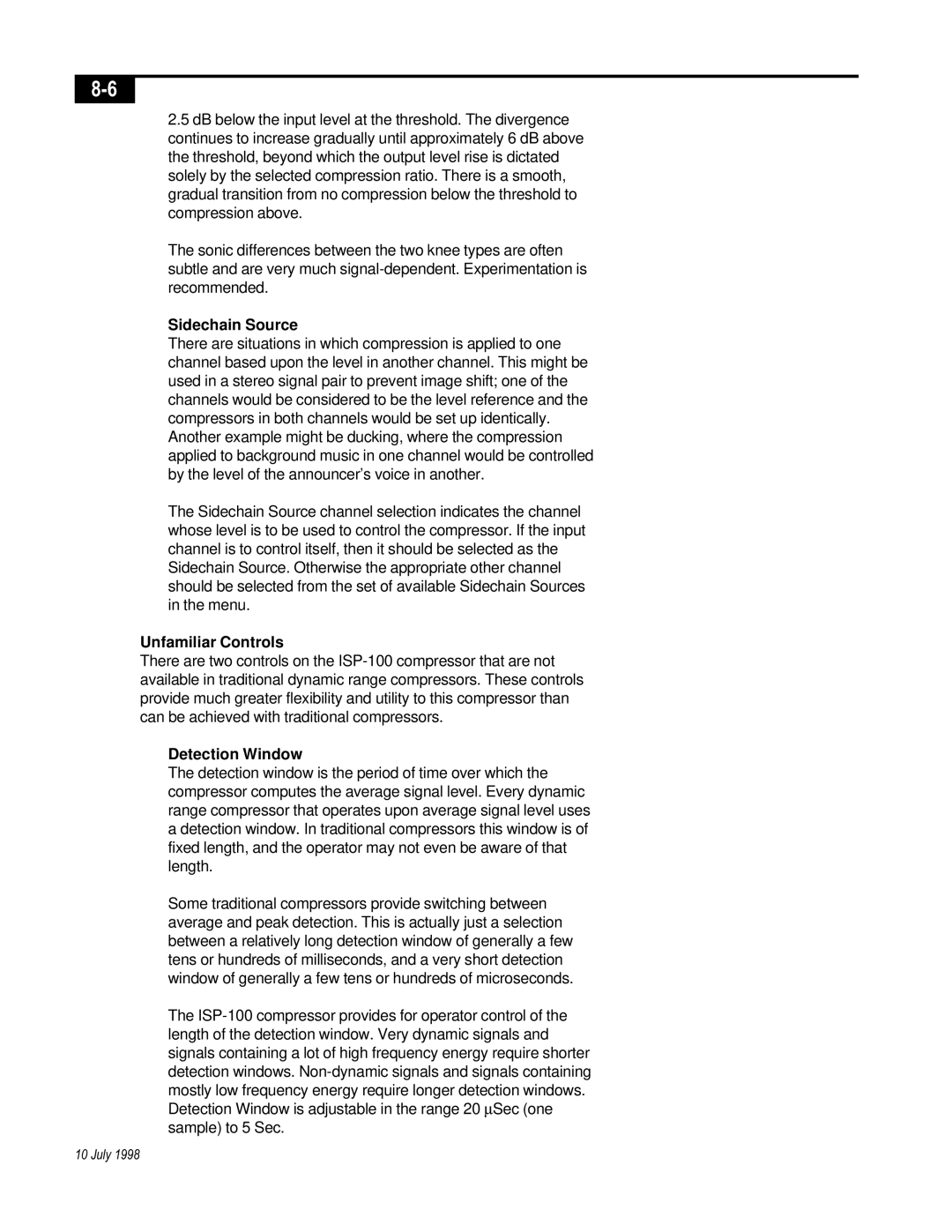2.5dB below the input level at the threshold. The divergence continues to increase gradually until approximately 6 dB above the threshold, beyond which the output level rise is dictated solely by the selected compression ratio. There is a smooth, gradual transition from no compression below the threshold to compression above.
The sonic differences between the two knee types are often subtle and are very much
Sidechain Source
There are situations in which compression is applied to one channel based upon the level in another channel. This might be used in a stereo signal pair to prevent image shift; one of the channels would be considered to be the level reference and the compressors in both channels would be set up identically. Another example might be ducking, where the compression applied to background music in one channel would be controlled by the level of the announcer’s voice in another.
The Sidechain Source channel selection indicates the channel whose level is to be used to control the compressor. If the input channel is to control itself, then it should be selected as the Sidechain Source. Otherwise the appropriate other channel should be selected from the set of available Sidechain Sources in the menu.
Unfamiliar Controls
There are two controls on the
Detection Window
The detection window is the period of time over which the compressor computes the average signal level. Every dynamic range compressor that operates upon average signal level uses a detection window. In traditional compressors this window is of fixed length, and the operator may not even be aware of that length.
Some traditional compressors provide switching between average and peak detection. This is actually just a selection between a relatively long detection window of generally a few tens or hundreds of milliseconds, and a very short detection window of generally a few tens or hundreds of microseconds.
The
10 July 1998
